WWII GERMAN ANTI-PARTISAN BADGE -
As German forces conquered one country after the other in the European landscape. Regular armed forces
surrendered under the might of the Third Reich. However, small groups of fighters armed themselves and
started fighting against far superior forces. This was the birth of guerrilla warfare waged against
Hitler's forces. These guerrilla groups were known as the Partisans. They operated in several countries
all over Europe.
Their activities began as early as 1941 and included sabotage against the transportation and power
grids. They also launched attacks against small military outposts. Their goal was to kill one
soldier at the time and take their weapons.
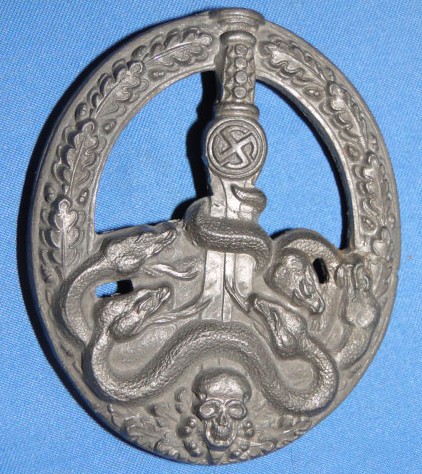 |
In later years the Allied forces started supplying
weapons to the Partisans by sea, air drops and other methods.
This form of combat was new to the Germans. They quickly responded by developing an anti-partisan
force. Originally under control of the army. However, their ranks soon included the Navy, police,
SS and others.
In 1942 the control of the Anti-partisan forces was transferred to the Waffen SS.
|
On January 30th, 1944 Hitler decided to institute a badge to recognize German forces who played a
role in fighting the Partisans. Hence the birth of the badge featured on this page.
|
 |
Hitler had an affinity for this badge as it was not easy to earn. It was more difficult to obtain than
the Close Combat badge . Recipients of these
awards were adept to the rigors of house to house, urban combat as well as the conventional fighting.
|
BADGE DESIGN
The design of the badge was fairly sinister. It consisted of an oval shape wreath with a sword
pointing downward. The handle rests at the top of the wreath. The sword is inserted into the
ground where five serpents are coiling around it. The snakes have their mouths open with a forked
tongue coming out. A single human skull is placed just above the tip of the blade. a leafy pattern
surrounds the skull. all metal construction.
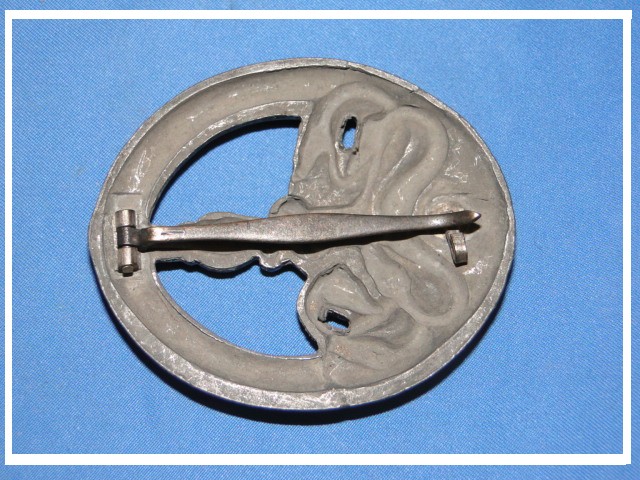
The back of the badge has a vertical pin ,
wire type, which is hinged at the top of the oval and is secured in the opposite end by a catch.
The badge is secured to the tunic
by driving the pin through a series of loops (two or more) sewn to the jacket.
The quality of construction of the badge could be fairly poor in relation to other German badges.
CRITERIA FOR THE AWARD
The Anti Partisan award was issued in three types. The badges were identical in design, the only difference was
the color. In addition there were two versions. One was the original while the second version was an update in
the design. The criteria for earning the award was the same between the versions.
The following table lists the criteria applied to Army and SS personnel.
| CLASS |
CRITERIA |
| Bronze |
Thirty days in combat.
|
| Silver |
Seventy five days in combat.
|
| Gold |
One hundred days in combat.
|
The criteria for Luftwaffe personnel was slightly different than that used by other branches.
| CLASS |
CRITERIA |
| Bronze |
Thirty combat sorties.
|
| Silver |
Seventy five combat sorties.
|
| Gold |
One hundred and fifty combat sorties.
|
|
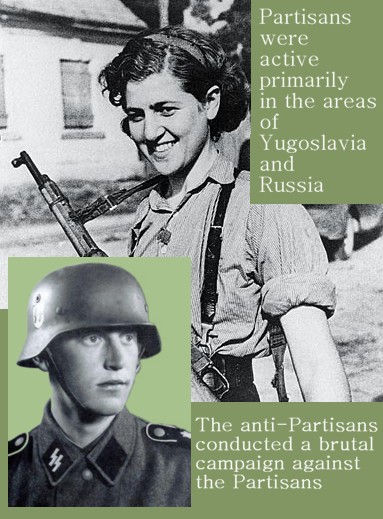
|
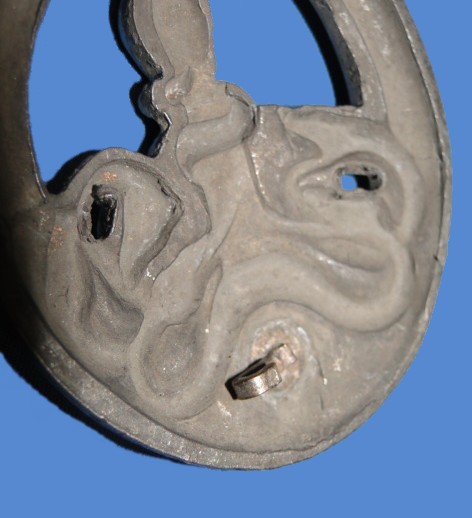 |
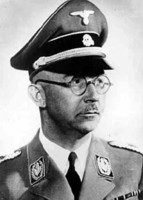
Heinrich Himmler was the head of the SS. It was his idea to name the badge "Bandenkampfabzeichen".
BADGE TYPES
The Anti Partisan badge was issued in a variety of types which includes the following:
First Type - Bronze
First Type - silver
First Type - Gold
Second Type - Bronze
Second Type - Silver
second Type - Gold
|
The name of the badge in German was "Bandenkampfabzeichen", where the word Banden translates to "gangs". This
action was an attempt to delegitimize the opposing forces as simple criminals instead of Partisans.

|
The "Military minute" is a series of instructional videos created by MilitaryItems.com for the purpose of
providing basic information about military collectibles. The idea is to expose people to the exciting
world of military collectibles.
The video presentation coupled with detailed photographs and written information, including a military
collectible's price guide, and anatomical breakdown of each piece enhances the visitor's experience.
Whether you are a long time collector, a beginner or simply have an interest in the history and value of
each collectible, we hope that you find the information presented here useful.
|
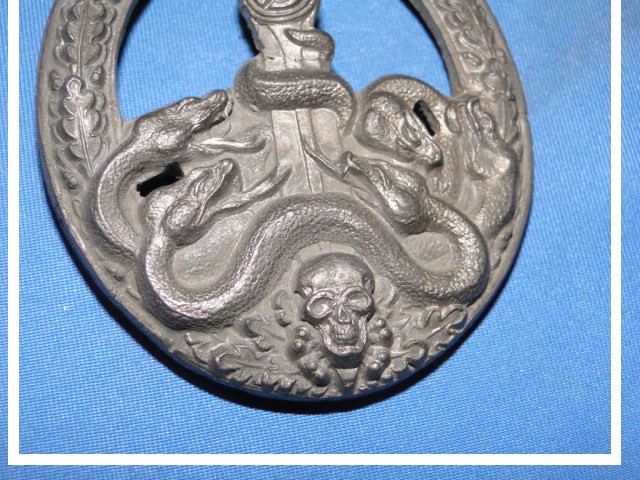
|
This page is a recognition and identification guide for WWII German badges and awards. Multiple
detailed photos of a specific sample are provided. Descriptions point out clearly defined points
that should be noted.
One of the most commonly asked questions is "How much is my WWII German badge worth?". A price
guide is included here to address this question. The value of the badges and awards is reviewed
over a period of several years. A trend can be observed. The present worth of the German
badges in the collector's market is illustrated.
This service is provided free of charge to the visitor/enthusiast courtesy of
MilitaryItems.com,
a company dedicated to the preservation of military history and to providing quality military
antiques and collectibles to museums, institutions and the general public.
|
|
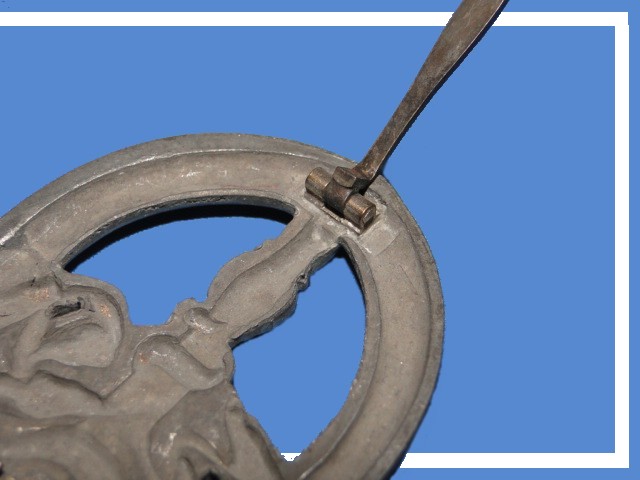
BY THE NUMBERS
It is hard to determine the exact number of Anti Partisan badges that were produced. However, thanks to the record
keeping maintained by the Wehrmacht, it is possible to estimate how many badges were actually issued. The number
stands above 3 thousand.
The actual number of anti Partisan badges produced is greater than the number that was issue. It must be accounted that the
armed forces would have a stock in hand so it could replace lost ones and issue new awards. In addition the factories
were likely to have warehouses with inventory at hand. The Anti-Partisan badge was not widely distributed
during WWII.
The population of Germany in 1939 was approximately 64,000,000.
COLLECTING ANTI PARTISAN BADGES
Collecting Third Reich memorabilia is a field that has been growing since the days the GI's rummaged around Europe
bringing back military souvenirs. German soldiers wore many of their awards on their uniforms when they went to battle.
Once the soldier was killed or captured, the American soldiers would take the awards as war trophies. Eventually all
these pieces came back to the United States where military history enthusiasts began to collect them.
|
"I am trying to figure out if I should get into collecting Anti Partisan badges."
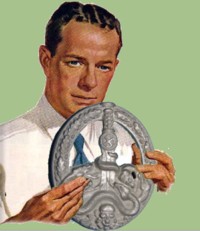 |
Determining which military badges to collect can be a challenging decision. The combination of availabiilty and
cost will often set the pace of what can be collected.
The adjacent table outlines some of the advantages and disadvantages of collecting the Anti Partisan badge.
|
|
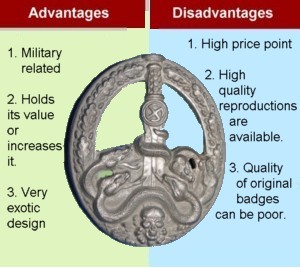
|
| ANTI-PARTISAN BADGE EXAMPLES |
The Anti-partisan badge was produced by several manufacturers and in different configurations.
The more examples of a particular badge that are examined the more knowledge is gained about the particular piece.
Differences in construction can be better appreciated. Markings on the back and other sections are better understood. The overall knowledge about the badge is expanded.
This section of the site provides several examples of the Anti-partisan badge.
This award is currently being
reproduced.
It is becoming more difficult to be able to tell the fake ones from the real ones because the quality
of the reproductions is improving. The collector must become familiarized with the construction style
and materials employed in the manufacturing of this badge. Attention to the details is critical in
order to be able to determine the authenticity of the badge.
If you have an interest is seeing other badges and awards of the Third Reich, you can do so by going
to our
WWII German Badges and Awards
identification guide. Where we cover Heer (Army), Navy (Kriegsmarine) and
Air Force (Luftwaffe) items.
| 






